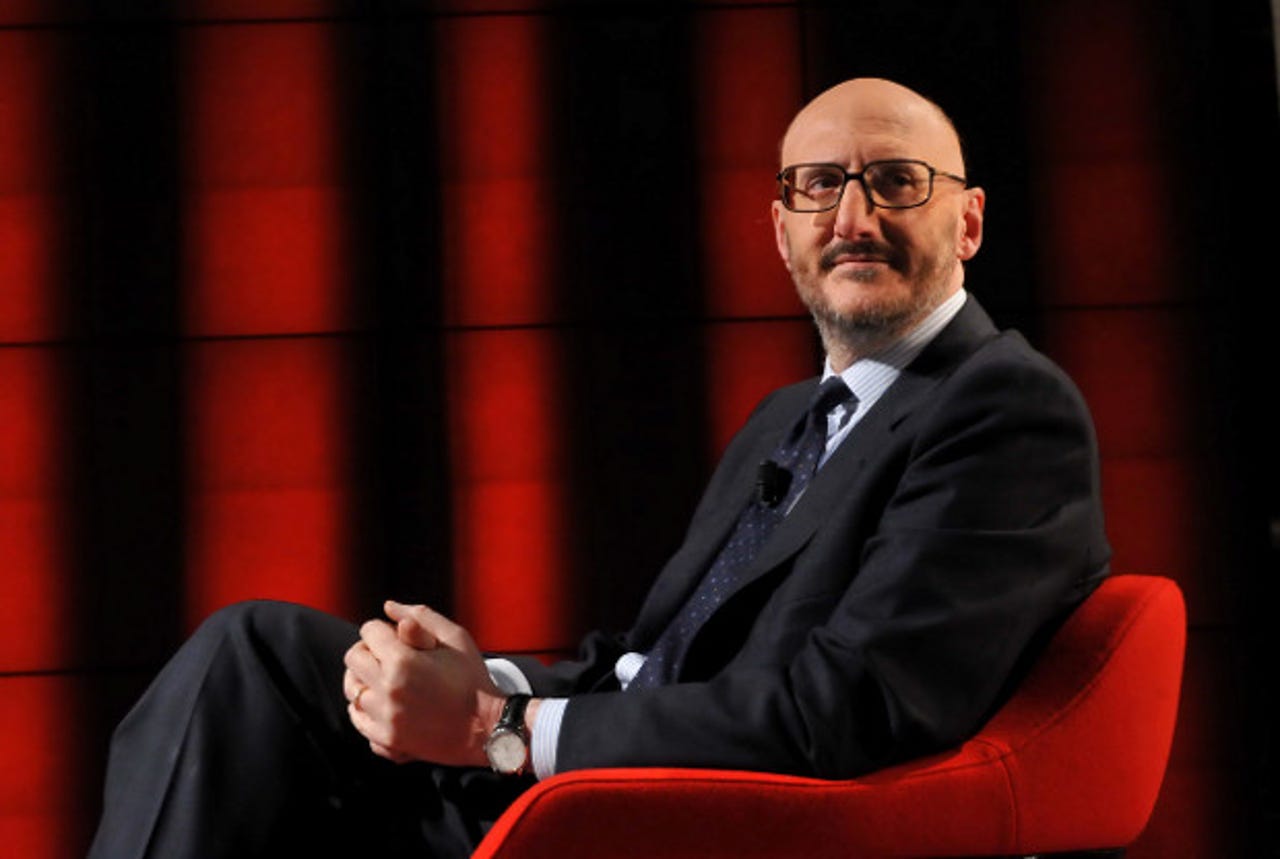Can Italy's Mr Digital Agenda drive the country into tech's 21st century?


Despite a CV that includes numerous jobs running large listed Italian and international companies, Francesco Caio may have embarked on his toughest job yet: in June, he signed up to become Italy's Mr Digital Agenda – and he won't be getting a euro for his efforts.
Caio — currently the chief executive of GE Aviation unit Avio Aero and previously the CEO of Cable & Wireless, Omnitel (now Vodafone Italia) and household appliance maker Merloni (now Indesit) — has the task of implementing Italy's digital agenda, a series of measures the government embraced last year that aim to close the digital gap that has opened in recent years between Italy and the rest of Europe.
While the potential pitfalls are many, including the risk the government could fall thereby torpedoing Caio's work thus far, and the job is massive, the Naples native is convinced he and his team can pull off the Herculean task. As if to highlight the difficulties they face, an official government website dedicated to the digital agenda greets visitors with an "under construction" notice (Caio and his team are not responsible for the website).
"I would say that in the next 18 to 24 months the projects Europe thinks are important will get done in Italy," Caio said in an interview with ZDNet. "The objective is to anchor Italy to the rest of Europe through the digitisation of [public sector] institutions, by focusing on projects that have already been identified."
Read this
Caio, in fact, has identified the three main projects that are the foundation of the digital agenda: implementing a digital national register, a database of all of Italy's citizens; introducing a system that allows public sector suppliers to invoice digitally; and creating a single digital identity for Italians to use when they interact with the state — no more separate logins for dealing with different government services.
Digitising the national population register is at an early stage, with migration of details from disparate databases to a single central alternative likely to start in the second half of next year and expected to be completed in 2015.
The platform created to allow government bodies to receive digital invoices is already up and running, as is a support system for those SMEs that are now learning how to use the new billing system. It's realistic to expect companies to be exclusively invoicing the government digitally by June, according to Caio.
Perhaps the biggest challenge of the three is setting up the infrastructure that will underpin the creation of each citizen's single digital identity, whereby all Italians will be given a single username and password to use for all their online interactions with public bodies. Caio says it will be completed by May.
"One of the big issues that emerged in our work is the need to move from a situation where every part of the public administration has its own digital system to total integration, where all parts of the public administration present themselves to people in the same way," Caio said.
The cost of delay
Italy is missing out on savings of €1bn a month as a result of delays in implementing the digital agenda, according to an estimate recently released by the School of Management at Milan's Polytechnic University. The university said fully implementing e-invoicing would save the country €1.1bn a year while digitising the records of Italy's national health service would save €6.5bn annually. Money could also be saved if the government made better use of cloud computing and e-procurement, the report said.
Caio is well respected throughout Europe, something that was key to his appointment to head Italy's efforts on the digital agenda. Neelie Kroes, the European Commission VP in charge of implementing the European Union's digital agenda, tweeted after meeting Caio in September: "Italy has so much potential! I appreciated the meeting with Francesco Caio, the new Italian Digital Champion!"
L'Italia ha cosi tanta potenzialità! Ho apprezzato l'incontro con Francesco Caio – il nuovo #DigitalChampion ITA! http://t.co/q9BOJVaCPa
— Neelie Kroes (@NeelieKroesEU) September 6, 2013
Italian prime minister Enrico Letta and Caio, who in the past has advised both the UK and Italian governments on their broadband strategies, agreed the digital agenda chief will step aside in March or April of next year.
Caio estimates he devotes between 50 to 60 percent of his time to the digital agenda, and the rest spent as CEO of Avio Aero, where he is working on the company's transition to its new owners, General Electric, which acquired the Italian company earlier this year. Caio said it is too early to know if he will stay on at GE when the integration is complete.
Joint work
Caio is coordinating his efforts with Agostino Ragosa who, as director of the Agency for a Digital Italy, works on the inside of the government to help make the public administration more efficient through digitisation. What might seem like overlapping roles Caio instead sees as an indication of the importance Letta has put on the digital agenda.
Caio is being flanked by 12 other Italians who are helping him implement the digital agenda. Like Caio, none of them are getting paid (they get their expenses reimbursed and a few are government employees who can work for Caio while on the government clock) and must balance their day jobs with the digital agenda work.
Some have argued that while the digital agenda is important for the Italian government it is not a true priority, otherwise the person picked to lead the effort would not have another day job, along with the 12 people helping him. Caio rejects this assessment.
"There has been a big discontinuity with Letta who has put this on the government agenda and particularly on his agenda, which is a major change from previous governments," Caio said. "My appointment came about because of Letta's attention to this issue and I have benefited from his full backing."
Despite the time constraints he and the other 12 face, Caio is upbeat about his chances for success and notes that Italy has already had some egovernment success, such as the complete digitisation of tax returns and the national register of companies.
"We have put a good project management in place and I see increased team work across different government institutions," Caio said. "It is very clear that this project takes time. There is a tendency to give deadlines that are unrealistic."
Caio's next looming deadline is in about six months when he steps aside and lets others take over the digital agenda. Only then will it be clear if he has indeed managed to help pull Italy's government infrastructure into the 21st century.